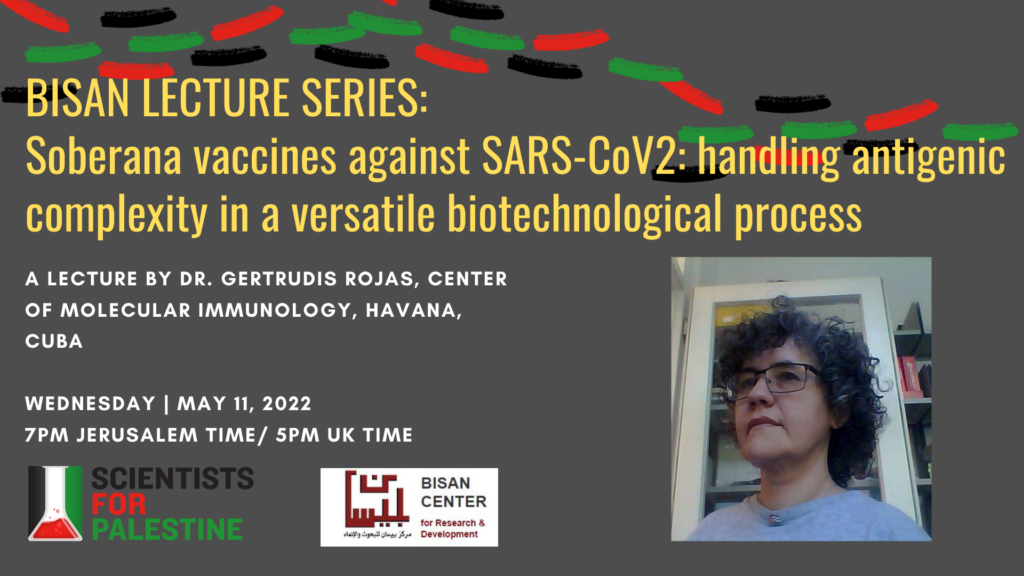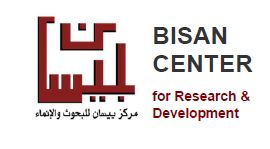
Title: Soberana vaccines against SARS-CoV2: handling antigenic complexity in a versatile biotechnological process
Speaker: Dr. Gertrudis Rojas (Center of Molecular Immunology, Havana, Cuba)
Abstract:
The advent of COVID-19 in Cuba has given rise to an urgent need for effective vaccines in the face of severely limited resources. To meet this challenge, Cuba relies on diversity: multiple production facilities with different platform technologies, multiple vaccine antigen formats, and multiple vaccine candidates. The Soberana family of vaccines are an important component of this complex landscape whose story is written at the interface between biology and chemistry. Their specific antigen component is the virus’s receptor-binding domain—its RBD.
The RBD is a promising vaccine antigen because it’s the part of the main viral surface protein that binds specifically to the receptor protein ACE2 on human cells to initiate infection. People vaccinated with the RBD produce antibodies that can prevent infection by blocking the interaction between the virus’s RBD and the ACE2 receptor on cells in vaccinees’ airways, lungs, and other tissues. A specially engineered form of the RBD was prepared by recombinant DNA technology in mammalian cells—living factories that produce the protein in a natural human-like environment. The RBD was then incorporated into vaccine platforms that had already been developed by Cuba’s extensive vaccination programs, creating three vaccine candidates, Soberana-01, Soberana-02, and Soberna-Plus, that are already being tested and deployed.
Biographical Sketch for Gertrudis Rojas
Cuban biochemist Gertrudis Rojas graduated from La Habana University in 1993 and received her Ph.D. in life sciences with an emphasis on cell and molecular biology in 2004. Her research career has been conducted first at the Center of Genetic Engineering and Biotechnology (1993 to 2007); and then at the Center of Molecular Immunology (CIM, 2008 to present), where she now serves as the Head of the Protein Engineering Department.
Although Dr. Rojas’s permanent jobs have all been in Cuba, she’s actively engaged in scientific exchanges with colleagues abroad, with the goal of bringing expertise, knowledge, and technologies to Cuba. She was trained at Maastricht and Nijmegen Universities (The Netherlands); has been a visiting scientist at the Sanger Institute (Cambridge, UK), Toronto University (Canada), Manchester University (UK), and Biotech Pharmaceuticals Ltd (Beijing, China); and has been a part-time post-doctoral fellow at the Alexander von Humboldt Foundation (AvH) and Braunschweig University (Germany). She is currently co-leader of a collaborative project between CIM and Braunschweig University, under the auspices of a long-term AvH cooperative research program. Her involvement in organizing the biannual Immunotherapy meetings in Cuba since 2010 has been another route to establishing a collaborative network between her research group and other labs around the world.
During the last two decades, Dr. Rojas has been Cuba’s leader in the application of phage display technology to obtain and optimize therapeutic proteins. Keeping this powerful technology working in Cuba’s often difficult conditions, and making it available to other Cuban institutions, has been a major achievement. Her own work has focused on the discovery and optimization of antibodies, especially antibodies able to attack cancer cells; as well as on mapping fine details of their interactions with targets. A second focus in the last few years has been cytokine engineering. Cytokines, essential protein messengers that mediate cell-to-cell communication, have thereby been modified to fine-tune their interactions with receptors and biological functions, and to improve their manufacturability and stability.
With the advent of COVID-19, research in Dr. Rojas’s lab, as in many other labs around the country, was redirected to help fight the virus. They produced multiple COVID-related molecules through high‑throughput protein production at laboratory scale, and supplied them to many Cuban institutions for research and analysis. They have also established a cell line that produces the SARS CoV-2 receptor binding domain (RBD) in two different forms for incorporation into Cuba’s Soberana series of vaccines. That cell line is now cultured at industrial scale, producing both forms of RBD in sufficient quantities to vaccinate most of the Cuba’s pediatric population, along with healthy and convalescent adults.
Teaching is an essential part of Dr. Rojas’s work, both as lecturer in post-graduate courses and as supervisor of under-graduate and graduate students from La Habana University and other Institutes.
Among Dr. Rojas’s honors are six Annual Scientific Research Prizes from the Cuban Academy of Sciences; the order Carlos J. Finlay of the Presidency of Cuba for outstanding contributions to scientific development; and the medal of the World Intellectual Property Organization awarded to the inventors of one of Cuba’s anti-COVID-19 vaccines.
Sponsored by



